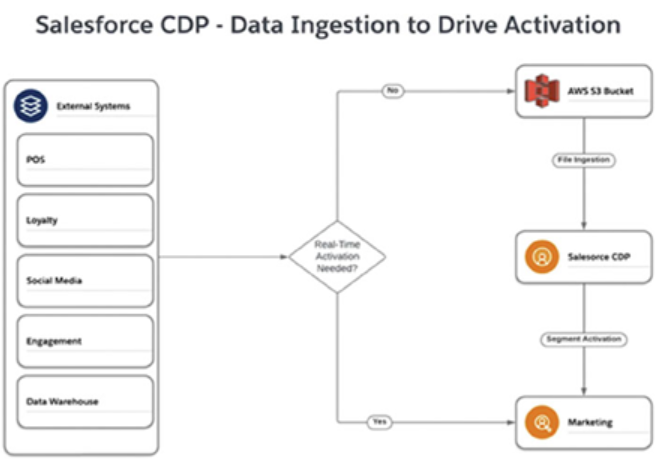Once the connections are established, your applications will start sending data. The customer data has to be stored where it is easy to retain it and use it for downstream applications. Some CDPs come with database storage wherein they store customer data within the same application. Other CDP vendors give you the flexibility to store the data in a data warehouse of your choice. Hence, you can store data in AWS Redshift, AWS S3, Azure Data Lake, and more (see Figure 5.8).

Figure 5.9: Store data in the warehouse or in the CDP platform itself
The decision to store the data should be taken during the data assessment stage in the define and design phase. Storing data in your own data warehouse has its advantages, as your developers are already familiar with the database. However, some CDPs have made data transformation easy for business users with just a few clicks. For more real-time purposes, storing in a CDP is a better option. If not, then using your database is a viable solution.
We have discussed identity resolution in Chapter 2: Introduction to Customer Data Platform. Performing identity resolution is important to uniquely identifying customer profiles. Most CDPs help in performing identity resolution based on certain criteria. Alternatively, you can create your own models to perform identity resolution with the data stored in your data warehouse.
Consent management is a critical aspect of developing a Customer Data Platform (CDP) that complies with privacy regulations and respects user preferences. Building a consent management platform involves understanding privacy regulations, identifying legal requirements, building preference management, and more. However, fortunately, many CDPs offer these services, and you can utilize them to stay ahead of the compliance requirements. If you are building it yourself, then it requires separate brainstorming sessions. We will not be covering consent management in detail in this book. However, we will touch upon this topic again in a later chapter.
Now, we come to the final phase of the CDP implementation process: Deployment. With the data flowing through the applications to our CDP, it is time to use the data to meet the business objectives.

